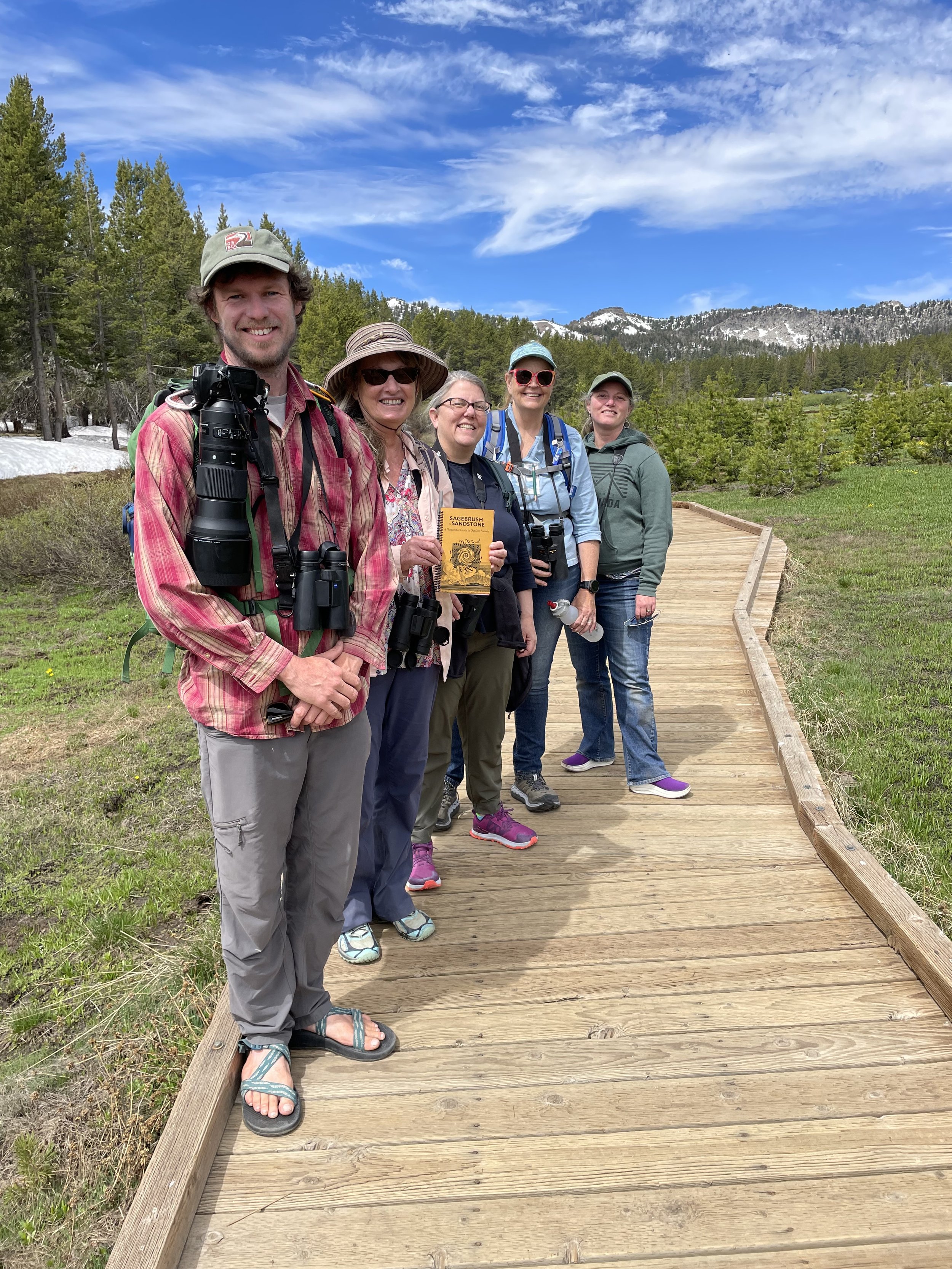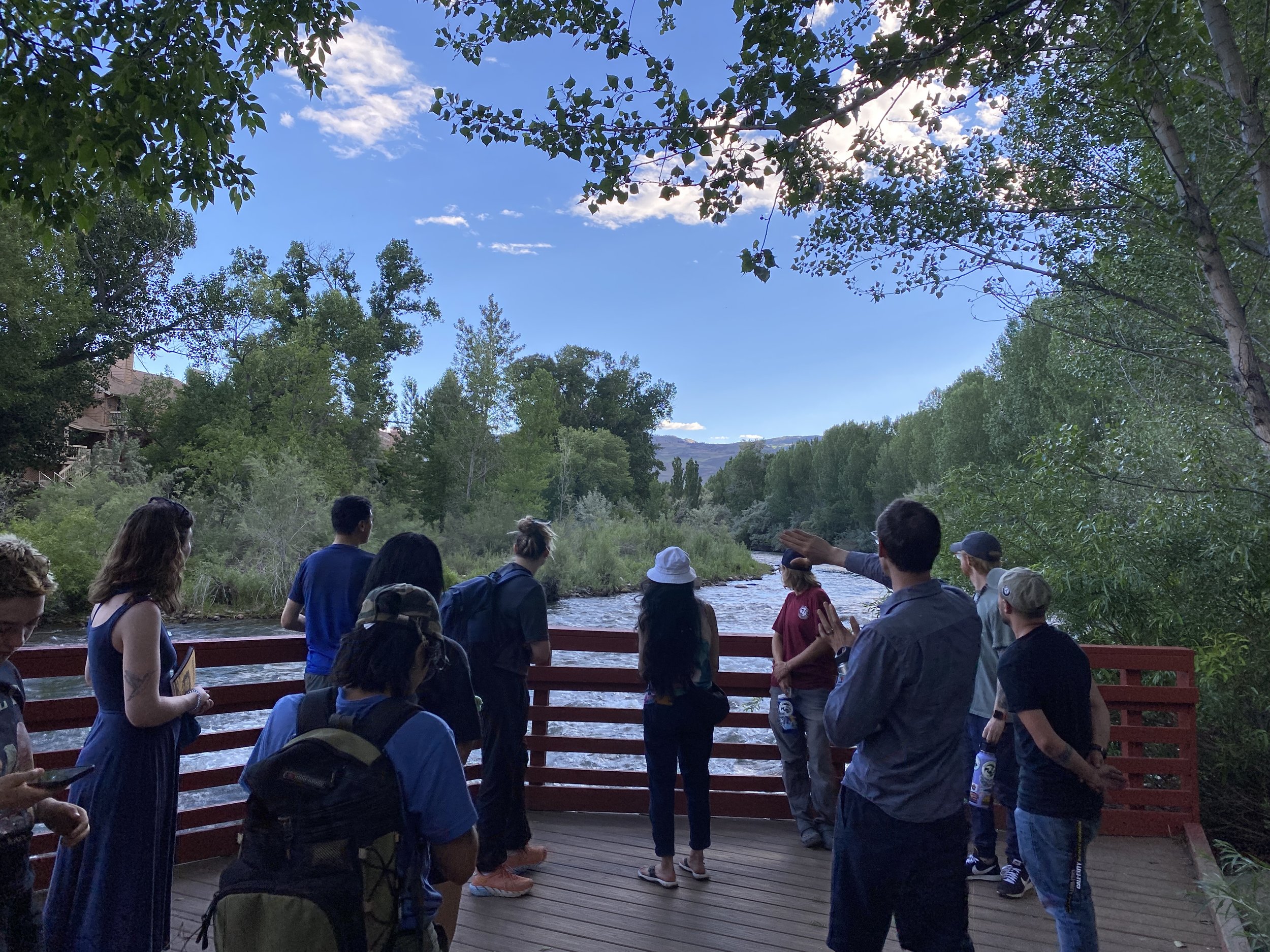Outdoor Firsts and Nevada Moments to Take Your Breath Away
By Kathleen Kuo
As we settle into another Nevada summer, I fondly remember my move to Las Vegas from the Midwest in the summer of 2019, and the many sensory “firsts” of desert life I encountered that year. I learned that shade and water were my best friends, and to keep a towel in my car to protect my bare legs from the leather of my car seats in the summer. I recall the beauty of my first golden-violet desert sunset as it slowly descended behind the Spring Mountains, the horror of my first mass grasshopper invasion, and the first time I smelled chocolate chip cookies baking on a sheet pan that someone left in their car in our apartment parking lot; the next week that same car filled the air with the perfume of slowly roasting hot dogs (I make no recommendations as to the food safety of either of these preparations).
Fly Ranch, June 2022. Photo by Kathleen Kuo.
My first time visiting northeastern Nevada wasn’t until 2022, when I drove to Elko and Tuscarora from Reno together with our executive director, Christina Barr. I will never forget my first brush with Mormon crickets, and the thousands of insect bodies that lined the roads. Equally memorable was the interplay of shifting greens, golds, silvers, and bronzes of the sagebrush, sand, grasses, and rolling hills between Winnemucca to Battle Mountain, Elko to Tuscarora. In 2023, Christina, her family, and I drove up from Reno to Gerlach and up to Fly Ranch past the playa where Burning Man takes place, where I saw Pyramid Lake and the Black Rock Desert for the first time. That first glimpse of Pyramid Lake was one of the most spectacular views I have ever experienced, and it is one I wish I could share with all the naysayers who think Nevada is a waterless place that consists only of neon lights.
I mention these memories above because I am grateful for these slow moments, the moments when one’s breath is taken away as you take in the world before you. These are moments that seem increasingly harder to come by in a world where we are dialed into screens and encumbered by the stresses of daily life. But for the last couple years, with the publication of Sagebrush to Sandstone: A Humanities Guide to Outdoor Nevada and the creation of its accompanying outdoor programs, my hope is that people reading our book or who attend these programs will find these same slow moments of joy and peace, and of wonderment and appreciation for the world around us.
It has been my pleasure this past year to connect and work with organizations across the state to provide outdoor humanities experiences as part of Sagebrush to Sandstone programming. From nature journaling to bird watching, writing poetry to learning about the history of Nevada wildfires, these Sagebrush to Sandstone events provide fun, relaxing, and educational moments for Nevadans.






Below is a sneak peek of upcoming Sagebrush to Sandstone events in 2024-2025:
July 14, 2024: Artown cyanotype workshop, Reno, Nevada
August 2024: Find us at the Friends of Nevada Wilderness’s Dark Sky Fest, Cedarville, California
August 2024: Full moon hike, Baker, Nevada
Late September/October 2024: Natural history and literary hike to celebrate the diamond anniversary of Earth Abides, Carson City, Nevada
Fall 2024: Poetry readings and walk, Desert National Wildlife Refuge, Las Vegas, Nevada
Fall 2024/Spring 2025: Fire ecology walk, River Fork Ranch, Minden, Nevada
Spring 2025: Photo and literary walk, Silver City, Nevada
Stay tuned for an upcoming Wild Nevadacast (PBS Reno) between August and October 2024 that highlights Sagebrush to Sandstone! We love seeing all of the adventures that your books have been on. Please feel free to share photos of your books around Nevada as well as any completed pages with us to share on our website and social media.
Where else would you like to see Sagebrush to Sandstone programming in Nevada? Are you brimming with ideas for volume two? Let us know! Contact Kathleen Kuo, Program Manager, at kkuo@nevadahumanities.org.
Sagebrush to Sandstone programming is supported with funding by the Charles Redd Center for Western Studies at Brigham Young University and the National Endowment for the Humanities.
Kathleen Kuo is a Program Manager for Nevada Humanities and coordinator of the Nevada Center for the Book. Along with Scott Dickensheets, she is the co-editor of Sagebrush to Sandstone: A Humanities Guide to Outdoor Nevada.
Photo courtesy of Kathleen Kuo.
Double Down blogger photo, Mongolia, 2017.


